Abstract
Various techniques were used to separate canine peripheral blood leucocytes into populations enriched in lymphocytes, polymorphonuclear leucocytes, phagocytic mononuclear cells (monocytes) and macrophages. Surface markers on each cell population were determined by rosette formation. Fc receptors for IgG and complement receptors (C3b and C3d) were present on PMN, monocytes, macrophages as well as on a sub-population of lymphocytes. Purification of the lymphocytes into T-and B-cell-enriched populations revealed that these receptors were present only on the B lymphocytes and not on the T lymphocytes. In addition, a third lymphocyte population, which did not possess surface immunoglobulin, and Fc receptor but not the complement receptor. None of the cell populations exhibited C4 complement receptors or Fc receptors for IgM. When different cell populations were tested for their ability to form rosettes directly with human type 'O' red blood cells it was found that most populations could rosette, suggesting that this technique could not be used as a specific marker for canine T lymphocytes.
Full text
PDF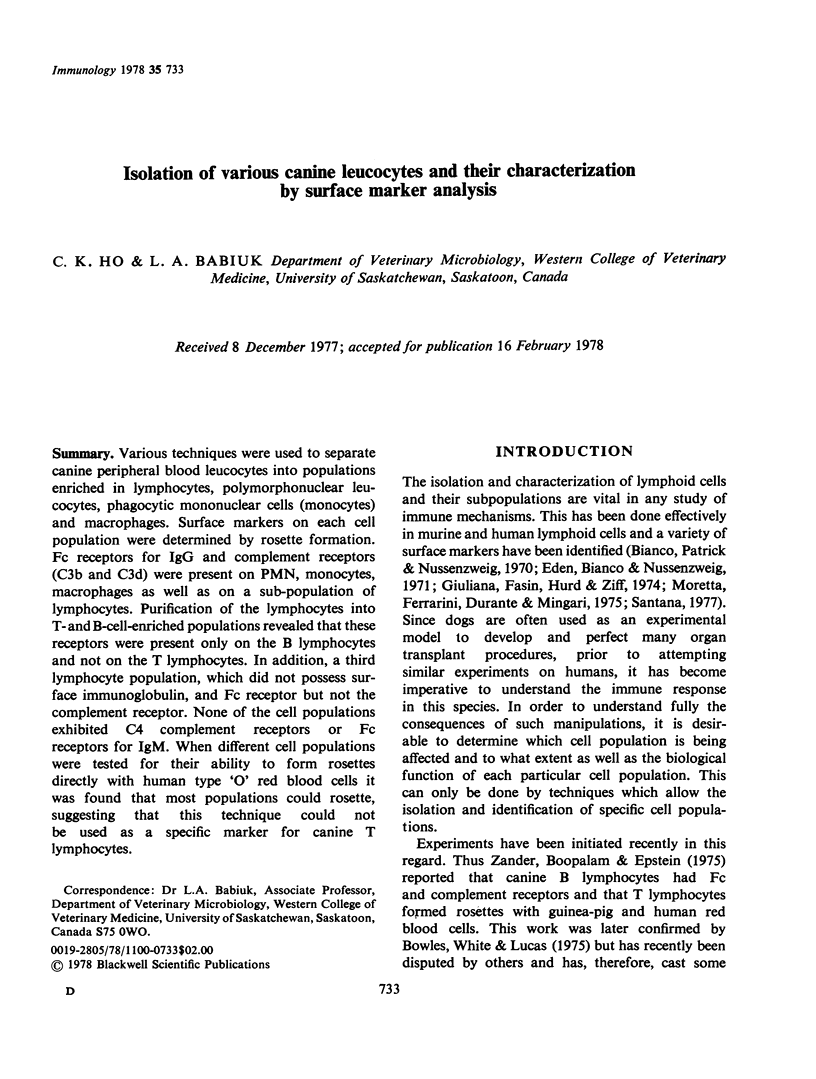
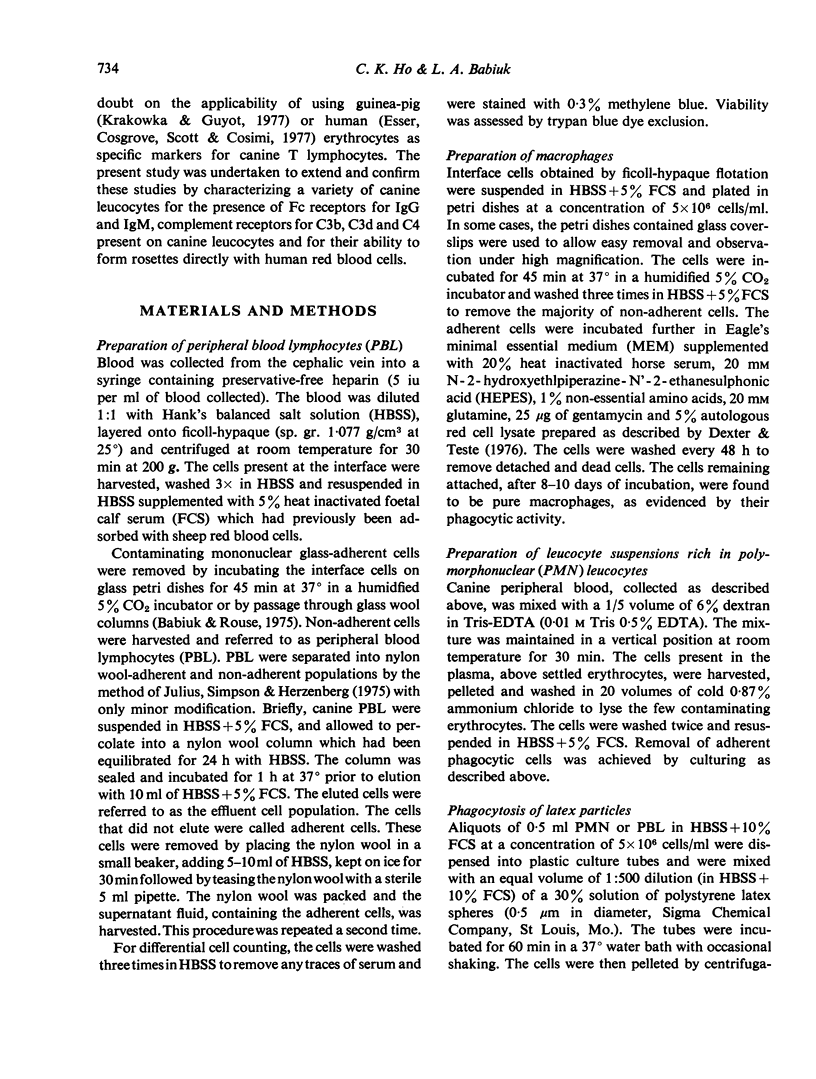
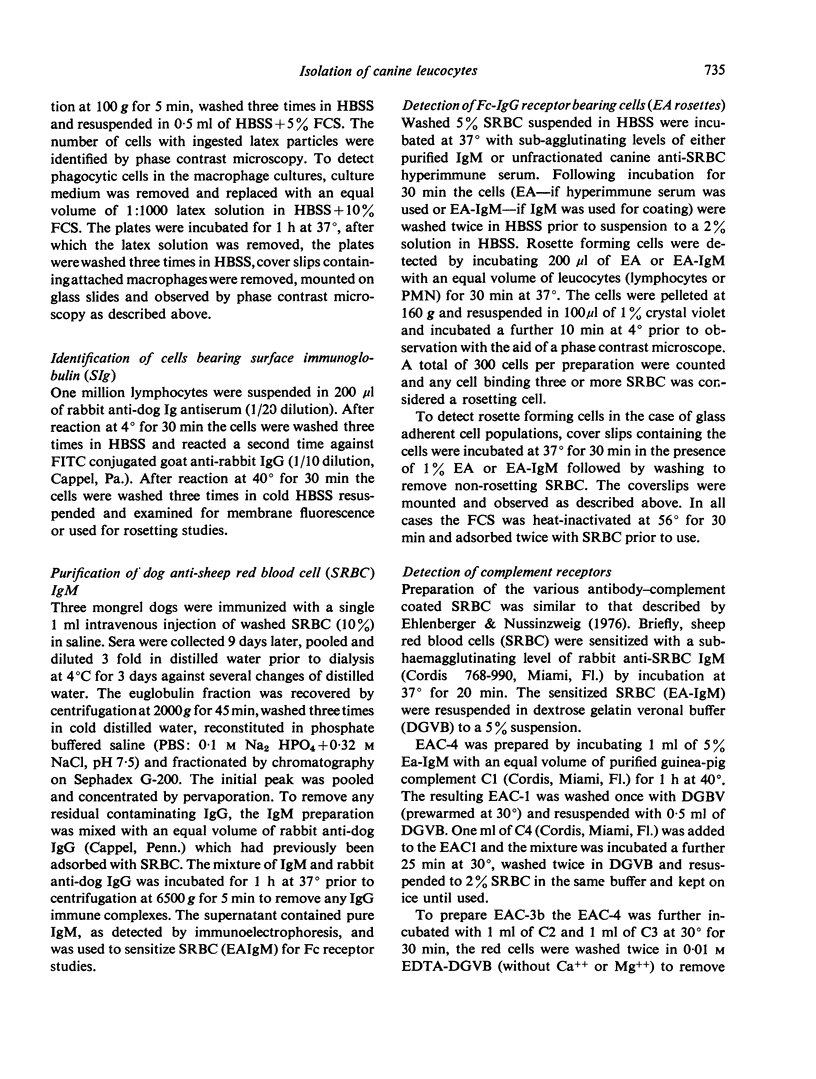
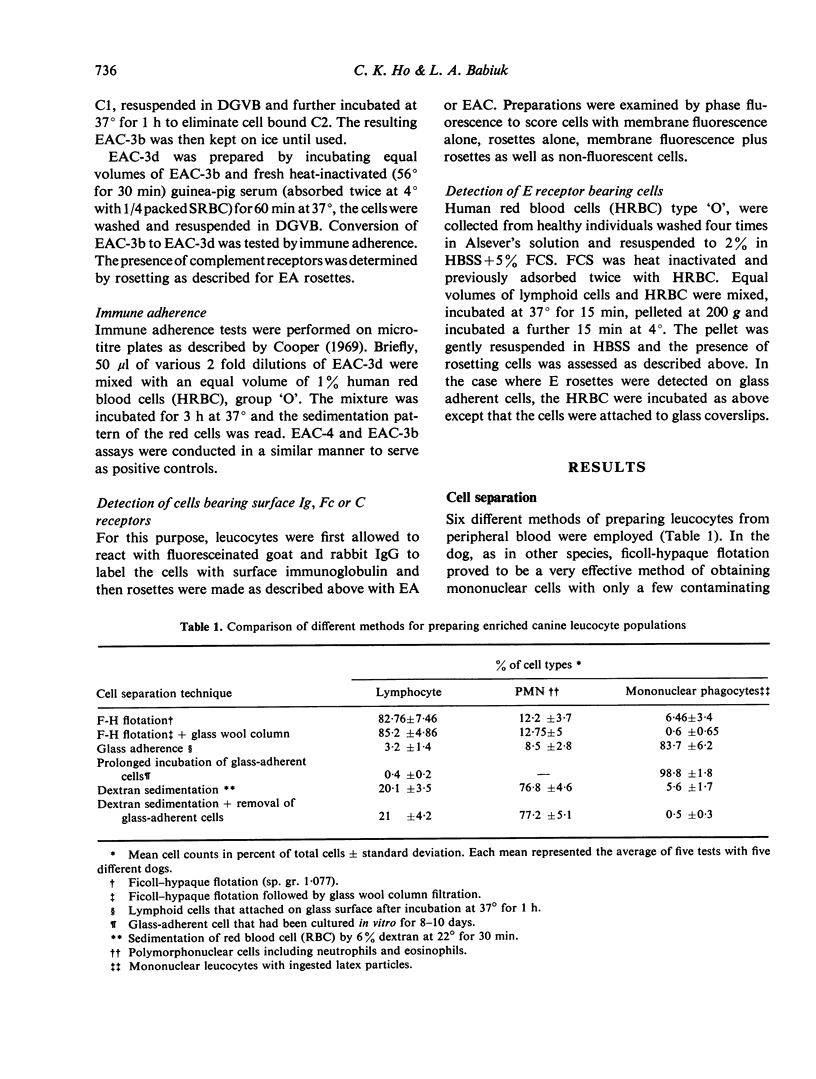
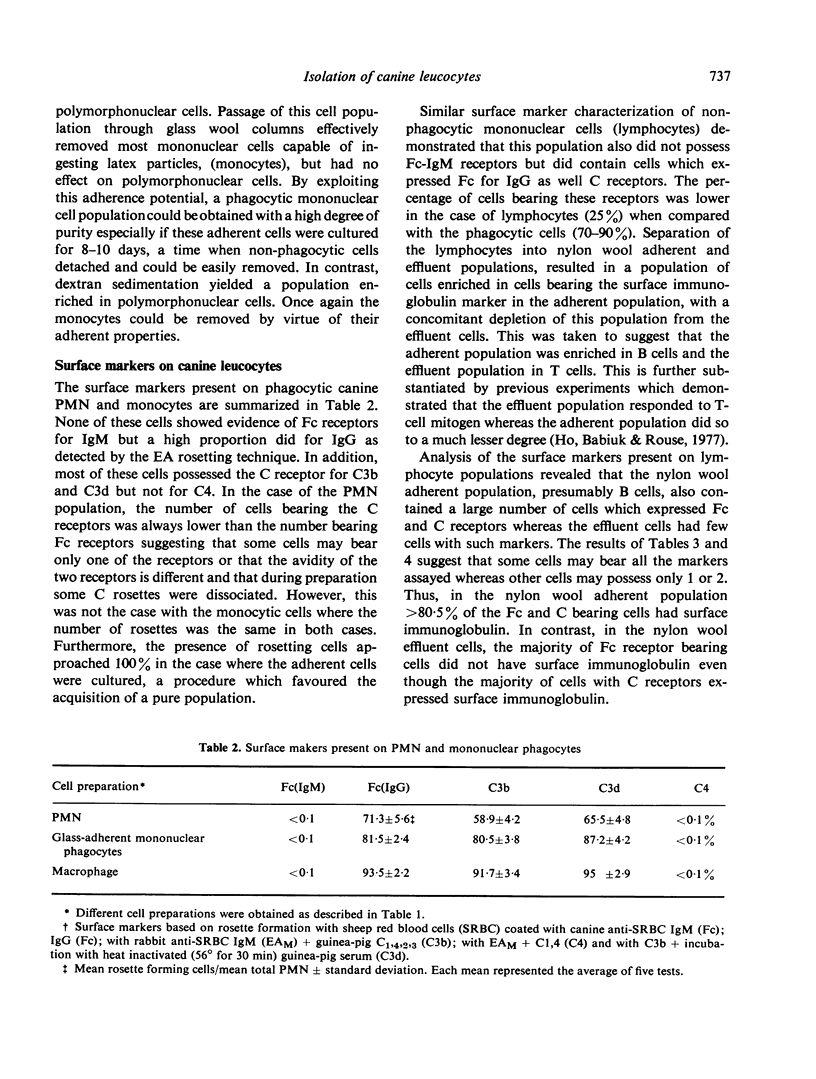
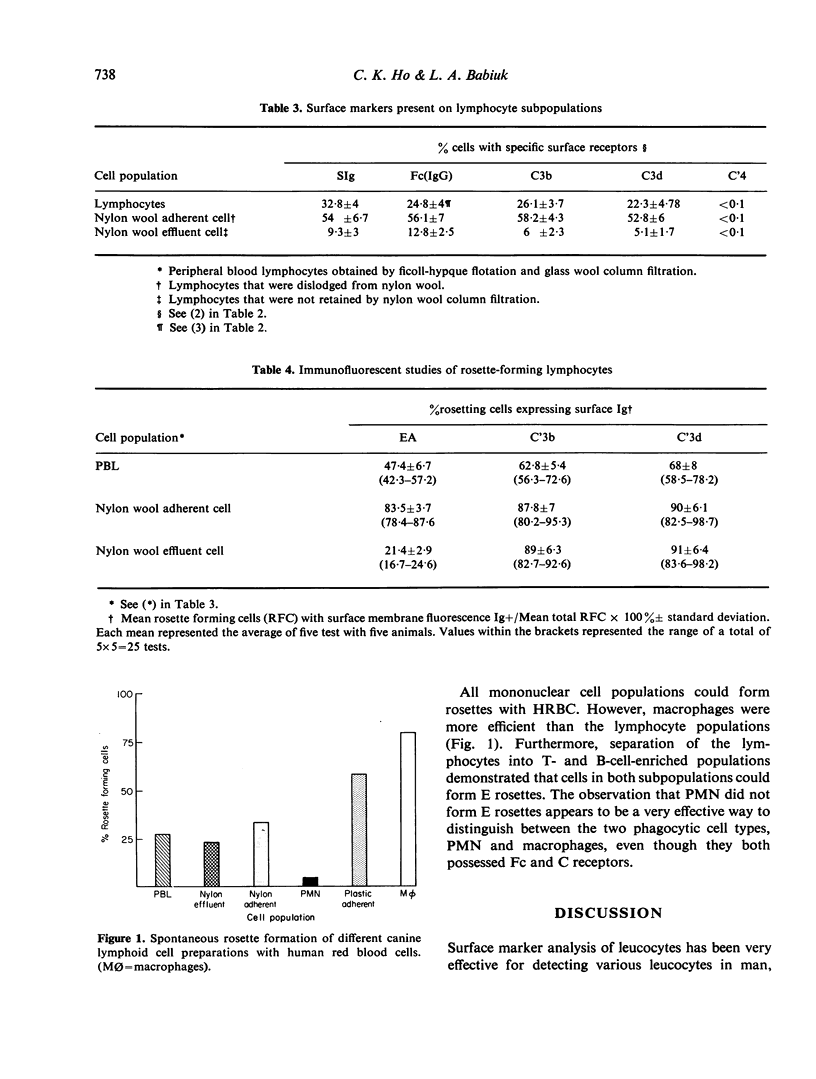
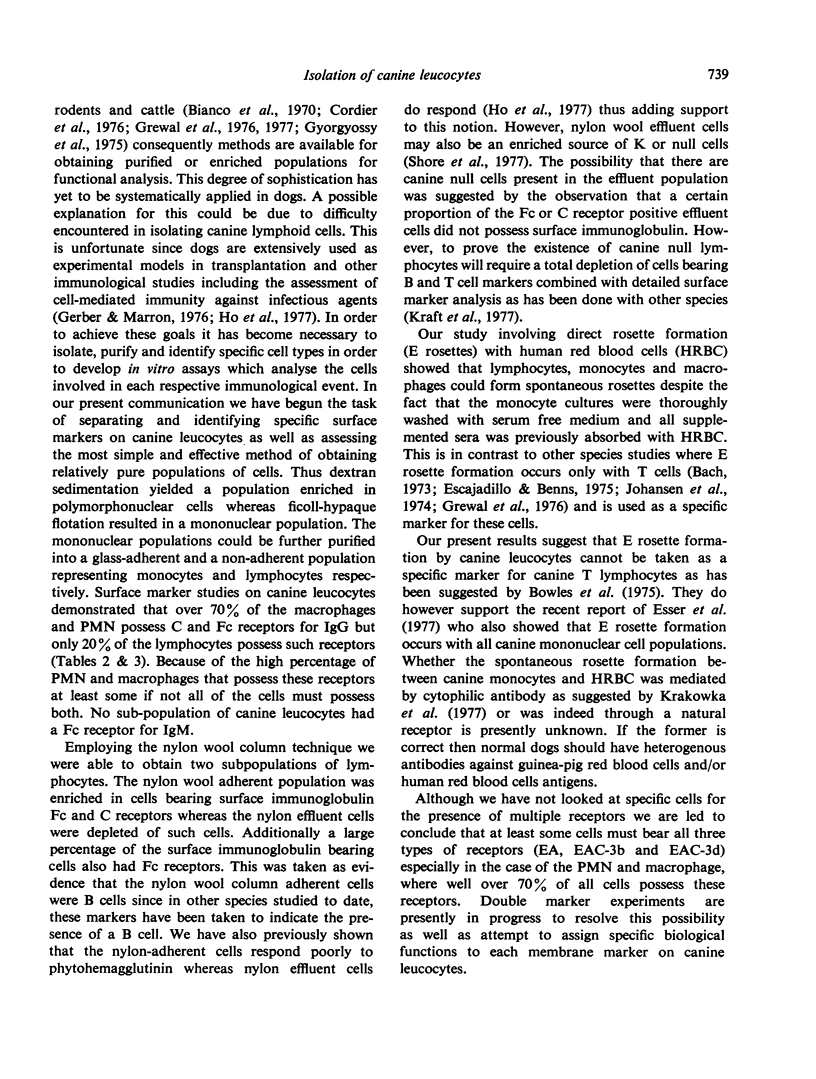
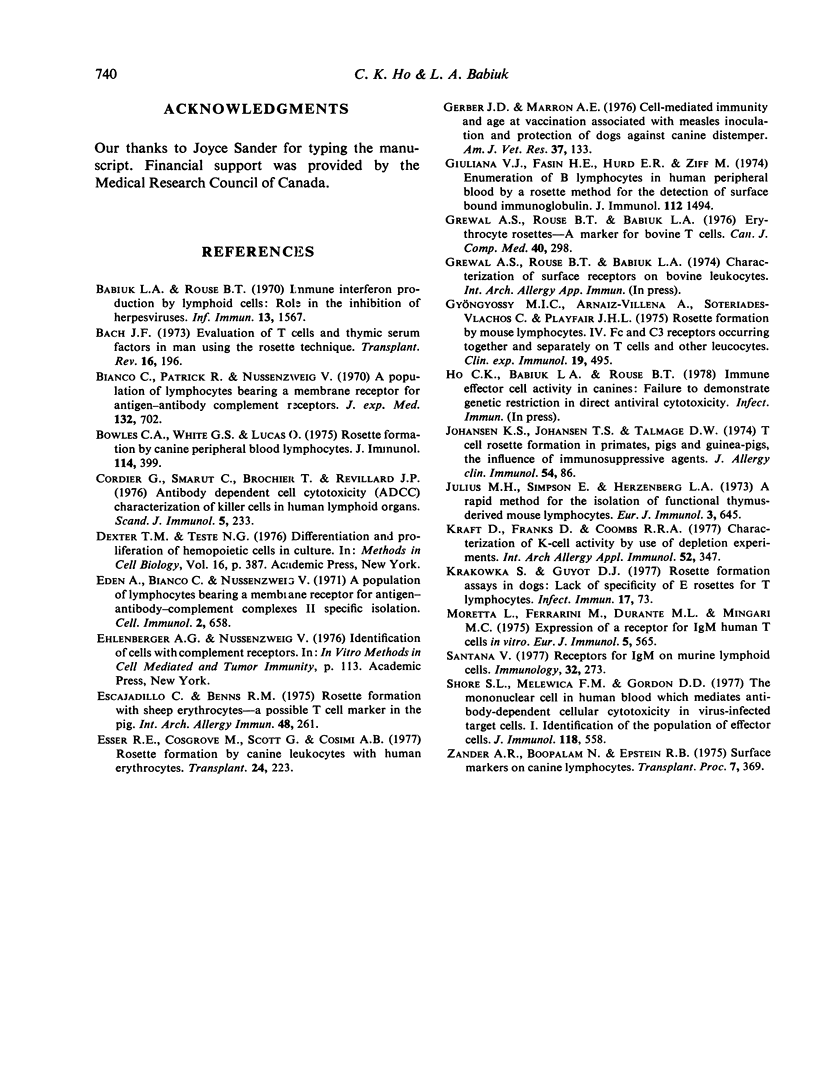
Selected References
These references are in PubMed. This may not be the complete list of references from this article.
- Babiuk L. A., Rouse B. T. Immune interferon production by lymphoid cells: role in the inhibition of herpesviruses. Infect Immun. 1976 Jun;13(6):1567–1578. doi: 10.1128/iai.13.6.1567-1578.1976. [DOI] [PMC free article] [PubMed] [Google Scholar]
- Bach J. F. Evaluation of T-cells and thymic serum factors in man using the rosette technique. Transplant Rev. 1973;16(0):196–217. doi: 10.1111/j.1600-065x.1973.tb00121.x. [DOI] [PubMed] [Google Scholar]
- Bianco C., Patrick R., Nussenzweig V. A population of lymphocytes bearing a membrane receptor for antigen-antibody-complement complexes. I. Separation and characterization. J Exp Med. 1970 Oct 1;132(4):702–720. doi: 10.1084/jem.132.4.702. [DOI] [PMC free article] [PubMed] [Google Scholar]
- Bowles C. A., White G. S., Lucas D. Rosette formation by canine peripheral blood lymphocytes. J Immunol. 1975 Jan;114(1 Pt 2):399–402. [PubMed] [Google Scholar]
- Cordier G., Samarut C., Brochier J., Revillard J. P. Antibody-dependent cell cytoxicity (ADCC). Characterization of 'killer' cells in human lymphoid organs. Scand J Immunol. 1976;5(3):233–242. doi: 10.1111/j.1365-3083.1976.tb00274.x. [DOI] [PubMed] [Google Scholar]
- Dexter T. M., Testa N. G. Differentiation and proliferation of hemopoietic cells in culture. Methods Cell Biol. 1976;14:387–405. doi: 10.1016/s0091-679x(08)60498-7. [DOI] [PubMed] [Google Scholar]
- Eden A., Bianco C., Nussenzweig V. A population of lymphocytes bearing a membrane receptor antigen-antibody-complement complexes. II. Specific isolation. Cell Immunol. 1971 Dec;2(6):658–669. doi: 10.1016/0008-8749(71)90013-x. [DOI] [PubMed] [Google Scholar]
- Escajadillo C., Binns R. M. Rosette formation with sheep erythrocytes--a possible T-cell marker in the pig. Int Arch Allergy Appl Immunol. 1975;48(2):261–275. doi: 10.1159/000231312. [DOI] [PubMed] [Google Scholar]
- Esser R. E., Cosgrove M., Scott G., Cosimi A. B. Rosette formation by canine leukocytes with human erythrocytes. Transplantation. 1977 Sep;24(3):223–225. [PubMed] [Google Scholar]
- Gerber J. D., Marron A. E. Cell-mediated immunity and age at vaccination associated with measles inoculation and protection of dogs against canine distemper. Am J Vet Res. 1976 Feb;37(2):133–138. [PubMed] [Google Scholar]
- Giuliano V. J., Jasin H. E., Hurd E. R., Ziff M. Enumeration of B-lymphocytes in human peripheral blood by a rosette method for the detection of surface-bound immunoglobulin. J Immunol. 1974 Apr;112(4):1494–1499. [PubMed] [Google Scholar]
- Grewal A. S., Rouse B. T., Babiuk L. A. Erythrocyte rosettes--a marker for bovine T cells. Can J Comp Med. 1976 Jul;40(3):298–305. [PMC free article] [PubMed] [Google Scholar]
- Johansen K. S., Johansen T. S., Talmage D. W. T cell rosette formation in primates, pigs, and guinea pigs. The influence of immunosuppresive agents. J Allergy Clin Immunol. 1974 Aug;54(2):86–93. doi: 10.1016/0091-6749(74)90036-0. [DOI] [PubMed] [Google Scholar]
- Julius M. H., Simpson E., Herzenberg L. A. A rapid method for the isolation of functional thymus-derived murine lymphocytes. Eur J Immunol. 1973 Oct;3(10):645–649. doi: 10.1002/eji.1830031011. [DOI] [PubMed] [Google Scholar]
- Kraft D., Franks D., Coombs R. R. Characterization of K-cell activity by use of depletion experiments. Int Arch Allergy Appl Immunol. 1976;52(1-4):347–354. doi: 10.1159/000231701. [DOI] [PubMed] [Google Scholar]
- Krakowka S., Guyot D. J. Rosette formation assays in dogs: lack of specificity of E rosettes for T lymphocytes. Infect Immun. 1977 Jul;17(1):73–77. doi: 10.1128/iai.17.1.73-77.1977. [DOI] [PMC free article] [PubMed] [Google Scholar]
- Moretta L., Ferrarini M., Durante M. L., Mingari M. C. Expression of a receptor for IgM by human T cells in vitro. Eur J Immunol. 1975 Aug;5(8):565–569. doi: 10.1002/eji.1830050812. [DOI] [PubMed] [Google Scholar]
- Santana V. Receptors for IgM on murine lymphoid cells. Immunology. 1977 Feb;32(2):273–278. [PMC free article] [PubMed] [Google Scholar]
- Shore S. L., Melewicz F. M., Gordon D. S. The mononuclear cell in human blood which mediates antibody-dependent cellular cytotoxicity to virus-infected target cells. I. Identification of the population of effector cells. J Immunol. 1977 Feb;118(2):558–566. [PubMed] [Google Scholar]
- Zander A. R., Boopalam N., Epstein R. B. Surface markers on canine lymphocytes. Transplant Proc. 1975 Sep;7(3):369–373. [PubMed] [Google Scholar]


